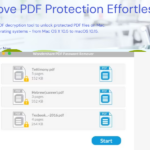Here Are Some Tips for Targeting Keywords to Bring Organic Traffic to an Affiliate Website

Bringing organic traffic to an affiliate website is crucial for generating revenue and achieving long-term success. One of the most effective ways to drive organic traffic is by strategically targeting keywords that align with user search intent. This process involves several key steps, including keyword research, content optimization, internal linking, competitor analysis, and more. Here, we’ll explore detailed tips and strategies for effectively targeting keywords to boost organic traffic to your affiliate website.
Keyword Research
Keyword research is the foundation of any successful SEO strategy. By identifying the right keywords, you can create content that meets the needs of your audience and improves your site’s visibility on search engines. Here’s how to get started:
- Use Google Keyword Planner: This free tool by Google is a great starting point for finding relevant keywords with high search volume. It allows you to input seed keywords related to your niche and provides data on keyword volume, competition, and cost-per-click (CPC) estimates. Focus on finding a mix of head terms (short, high-volume keywords) and long-tail keywords (longer, more specific phrases with lower search volume but often higher conversion rates).
- Consider Search Intent: When choosing keywords, it’s crucial to understand the search intent behind them. Are users looking for information, looking to make a purchase, or seeking specific services? Keywords that align closely with your content and user intent will perform best. For affiliate websites, keywords with commercial or transactional intent (e.g., “best running shoes for men”) are typically more valuable than purely informational keywords.
- Analyze Keyword Difficulty: Not all keywords are worth targeting, especially if they have high competition. Use tools like Ahrefs, SEMrush, or Moz to analyze the keyword difficulty. A balanced approach that targets low to medium difficulty keywords can help you rank faster, especially if your site is new or has low domain authority.
- Explore Related Searches and Questions: Use Google’s “People Also Ask” and “Related Searches” features to find additional keyword ideas. These suggestions can help you expand your keyword list and discover content opportunities that you might not have considered initially.
Content Optimization
Once you have your target keywords, the next step is to create content that effectively uses these keywords while addressing user intent. Here are some tips for content optimization:
- Create High-Quality, Relevant Content: The primary goal of your content should be to provide value to your audience. Whether it’s a blog post, product review, or how-to guide, your content should thoroughly address the topic and answer any questions the user might have. High-quality content that satisfies user intent will keep visitors on your site longer and reduce bounce rates, both of which are positive signals to search engines.
- Optimize On-Page Elements: Ensure that your target keywords are naturally incorporated into key on-page elements, including the title, meta description, headers (H1, H2, etc.), and throughout the body text. Avoid keyword stuffing—overusing keywords can harm your rankings. Instead, focus on semantic SEO by including related terms and synonyms that help search engines understand the context of your content.
- Use Engaging Formats and Media: Enhance your content with engaging formats such as infographics, videos, and interactive elements. These can improve user engagement and increase the time visitors spend on your page. For affiliate websites, video reviews or demonstrations can be particularly effective at driving conversions.
- Implement a Clear Call-to-Action (CTA): Each piece of content should have a clear and compelling CTA that guides the user towards the desired action, whether it’s clicking an affiliate link, subscribing to a newsletter, or making a purchase.
Internal Linking
Internal linking is a powerful but often underutilized SEO tactic that can help improve the organic ranking of your target pages. Here’s how to use it effectively:
- Link to Relevant Pages: Use internal links to connect related content on your website. For example, if you have a blog post about the best running shoes, link to related articles such as “How to Choose Workout Sneakers for Different Terrains” or “Top Running Accessories for Beginners.” This helps users navigate your site more easily and improves the authority of your target pages.
- Use Descriptive Anchor Text: When creating internal links, use descriptive anchor text that includes your target keywords. This helps search engines understand the context of the linked pages and boosts their relevance for the associated keywords.
- Create a Logical Link Structure: Ensure that your internal linking structure is logical and user-friendly. Organize your content in a way that makes sense, with cornerstone content or pillar pages that link out to related cluster pages. This approach not only improves SEO but also enhances the user experience.
Research Competitors
Analyzing your competitors is a valuable strategy for identifying which keywords to target and how to structure your content. Here’s how to conduct effective competitor research:
- Identify Top Competitors: Start by identifying your main competitors in the affiliate space. These could be websites that rank well for your target keywords or those that have a similar audience and product focus.
- Analyze Their Keywords and Content: Use SEO tools like Ahrefs, SEMrush, or SpyFu to analyze your competitors’ websites. Look at the keywords they’re ranking for, their top-performing content, and the strategies they’re using. This analysis can reveal keyword opportunities that you may have missed and help you understand what type of content performs well in your niche.
- Assess Competitor Backlinks: Backlinks are a critical factor in SEO success. Analyze your competitors’ backlink profiles to identify potential link-building opportunities for your own site. Reach out to the same websites for guest posting, collaborations, or other link-building tactics.
Topic Clusters
Organizing your content into topic clusters is an effective way to improve your SEO and provide a better user experience. Here’s how to implement a topic cluster strategy:
- Create Pillar Pages: A pillar page is a comprehensive guide or resource that covers a broad topic in-depth. For example, if your affiliate site focuses on fitness, a pillar page could be “The Ultimate Guide to Fitness for Beginners.” This page should cover the main aspects of the topic and link out to more specific cluster pages.
- Develop Cluster Pages: Cluster pages are individual pieces of content that cover subtopics related to the pillar page. For instance, cluster pages for the fitness pillar could include “Best Cardio Workouts for Weight Loss” or “Strength Training Tips for Beginners.” Each cluster page should link back to the pillar page, creating a cohesive structure that signals to search engines that your content is comprehensive and authoritative on the topic.
- Use Consistent Internal Linking: Consistently link your cluster pages to the relevant pillar pages and vice versa. This creates a strong internal linking network that boosts the SEO value of both the pillar and cluster pages.
Social Media
While social media isn’t a direct ranking factor for SEO, maintaining an active presence on platforms like Facebook, Instagram, and Twitter can drive traffic to your site and amplify your content’s reach. Here’s how to leverage social media for your affiliate website:
- Share Your Content Regularly: Use social media to share your blog posts, product reviews, and other content. This can help you reach a wider audience and attract more visitors to your site. Make sure to include engaging visuals and a compelling caption to encourage clicks.
- Engage with Your Audience: Social media is a two-way street. Engage with your audience by responding to comments, answering questions, and participating in relevant conversations. Building a community around your brand can lead to increased trust and higher conversion rates.
- Utilize Paid Advertising: If your budget allows, consider using paid advertising on social media platforms to promote your content. Targeted ads can help you reach specific demographics and drive high-quality traffic to your affiliate site.
Programmatic SEO
Programmatic SEO is an advanced strategy that involves automating the creation of large amounts of content to target numerous keywords and drive traffic. While it can be highly effective, it’s important to ensure that the content generated is valuable and unique. Here’s how to approach programmatic SEO:
- Identify Opportunities for Automation: Look for areas where you can automate content creation without sacrificing quality. This might include generating product descriptions, location-based content, or FAQ pages that can be easily templated.
- Maintain Content Quality: Programmatic SEO should not come at the expense of content quality. Even automated content needs to be well-written, informative, and useful to your audience. Poor-quality content can harm your site’s reputation and negatively impact your SEO.
- Use Data to Drive Content: Leverage data from tools like Google Analytics, Google Search Console, and other SEO tools to inform your programmatic SEO strategy. Focus on high-value keywords and content types that are most likely to attract traffic and conversions.
FAQs
1. What is keyword research, and why is it important for an affiliate website
Keyword research involves identifying terms and phrases that people use when searching for information online. It’s crucial for an affiliate website because it helps in creating content that meets user search intent, improving visibility on search engines, and driving targeted organic traffic that is more likely to convert.
2. How can I find the right keywords for my affiliate website
Use tools like Google Keyword Planner, Ahrefs, or SEMrush to find relevant keywords. Focus on a mix of head terms (short, broad keywords) and long-tail keywords (longer, specific phrases). Consider search intent, keyword difficulty, and competition to choose keywords that are likely to attract high-quality traffic.
3. What is the best way to optimize content for SEO on an affiliate website
To optimize content for SEO, ensure that your content is high-quality, relevant, and aligns with user intent. Use target keywords naturally within titles, headings, and body text. Incorporate related terms and synonyms, and include engaging formats like images, videos, and infographics to enhance the user experience.
4. How can internal linking help improve my affiliate website’s SEO
Internal linking helps distribute page authority across your website and guides users to relevant content, improving the overall user experience. By linking related content, you signal to search engines that your site has comprehensive information on a topic, which can boost the rankings of your target pages.
5. Why is competitor analysis important for keyword targeting
Analyzing competitors helps identify which keywords are driving traffic to their websites and reveals content strategies that are working well. This insight allows you to discover new keyword opportunities, understand market trends, and refine your own content strategy to gain a competitive edge.
6. What are topic clusters, and how do they benefit an affiliate website
Topic clusters involve organizing content into interconnected groups, with a central pillar page and supporting cluster pages. This structure helps create a strong internal linking network, improves content organization, and signals to search engines that your site offers comprehensive coverage of specific topics, enhancing SEO performance.
7. How can social media support my SEO efforts for an affiliate website
While social media doesn’t directly affect search engine rankings, it can drive traffic to your site and increase content visibility. Regularly sharing your content on platforms like Facebook, Instagram, and Twitter, engaging with your audience, and using paid promotions can help attract visitors who may become repeat users or customers.
8. What is programmatic SEO, and how can it be used effectively
Programmatic SEO involves automating the creation of large amounts of content to target numerous keywords. It’s effective for scaling content production but must maintain quality to ensure it provides value to users. Focus on areas that can be automated without compromising on relevance, such as product descriptions or FAQ pages.
9. How can I track the performance of my SEO efforts on an affiliate website
Use tools like Google Analytics, Google Search Console, Ahrefs, or SEMrush to monitor your SEO performance. Track key metrics such as organic traffic, keyword rankings, bounce rates, and conversion rates to evaluate how well your strategies are working and identify areas for improvement.
10. What are the common mistakes to avoid when targeting keywords for an affiliate website
Common mistakes include targeting overly competitive keywords, neglecting search intent, keyword stuffing, and creating low-quality content. To avoid these pitfalls, focus on a balanced keyword strategy, ensure content is valuable and relevant, and prioritize user experience over aggressive SEO tactics.
Conclusion
Driving organic traffic to an affiliate website requires a strategic approach to keyword targeting, content optimization, internal linking, and more. By conducting thorough keyword research, creating high-quality content, and leveraging tactics like competitor analysis, topic clusters, and social media, you can significantly improve your site’s visibility and attract the right audience. Programmatic SEO offers additional opportunities for scaling content production, but it’s essential to maintain a focus on quality and user value. With these strategies in place, your affiliate website will be well-positioned to achieve sustainable growth and success in a competitive online landscape.



